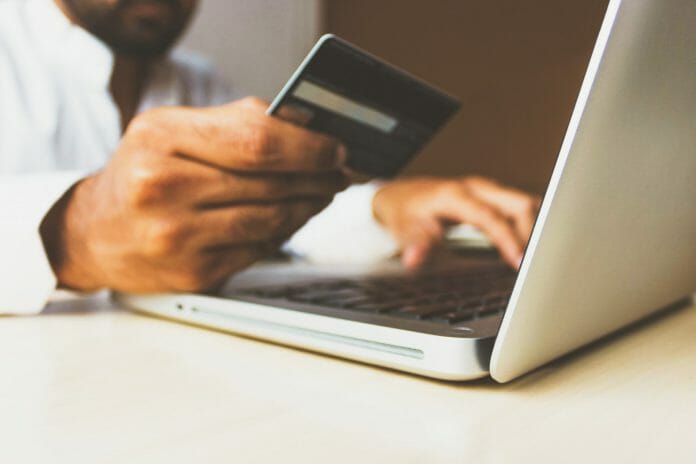By Dylan Tan, Co-Founder & Chief Executive Officer of Split,
Over the last year, the ongoing pandemic has undoubtedly reshaped consumer behaviour and the retail sector. Financial uncertainties and cost-cutting on multiple fronts have necessitated wiser budgeting habits and more cautious spending among consumers, causing the retail industry to react accordingly to this major shift. Due to that, the emergence of Buy-Now-Pay-Later (BNPL) in Malaysia around the same time as the Covid-19 pandemic is regarded by many as a timely and indispensable tool with which businesses can maintain sustainable growth in this trying period.
With global BNPL transaction volumes set to surge from USD 285 billion in 2018 to USD 680 billion in 2025 at a compound annual growth rate (CAGR) of 13.23%, it is not surprising to see many retailers in Malaysia already adopting this more convenient, alternative payment method. Allowing customers to make purchases and paying them off over time in interest-free instalments, BNPL enables consumers to manage their budgets when making purchases while opening up a massive new segment of customers for merchants, particularly young millennials with fixed budgets and those who do not own credit cards.
More than that, BNPL has the potential to turn merchants into omnichannel sellers, allowing them to expand their outreach methods to a wider audience via online channels that they may not have previously considered or been able to access. For example, Split’s Shariah-compliant certified solution extends to businesses that operate solely via face-to-face transactions and on social media platforms like Instagram and Facebook, chat applications like WhatsApp, and live streams. In fact, even an established company like Dyson, where customers usually make purchases via its retail stores or its website, has implemented Split’s WhatsApp BNPL to cater to shifting consumer behaviour that prioritizes online shopping but would still like to be consulted by an in-store expert.
Furthermore, a payment method like BNPL addresses common consumer concerns with instalments, most common of which include the worry of ending up paying more, unwanted penalties should the inability to make repayments occur, indebtedness, and more. With BNPL, merchants are able to provide their customers with the assurance of interest-free credit, while the BNPL operator encourages responsible spending and wiser budgeting through spending safeguards and limits.
Unlike credit cards, BNPL does not monetize through interest, and Split takes it a step further by not even charging customers late fees or any other penalties for missing payments. Eventually, these customers have the potential to become return shoppers with the merchant, thus resulting in sustainable business growth.
Above and beyond, I think that it is an effective way of revitalizing the Malaysian business landscape and eventually transforming it into the digital economy envisioned by Malaysia’s MyDigital blueprint. In light of the current COVID-19 situation, it is more important than ever for business owners to leverage user-friendly tools so that they will continue to be relevant and more importantly, competitive in their respective markets.
As a customer acquisition tool, BNPL has the potential to ensure greater conversion for businesses while creating a heightened sense of trust and loyalty among customers towards merchants. By allowing customers to make purchases in instalments with no interest or financial charges, BNPL merchants are able to drive incremental sales, thus ensuring a sustainable growth rate for their businesses. A good example of this would be Zoffya, an online fashion retailer for Muslimah clothing whose month-on-month sales grew by 228% when they started offering BNPL to their customers.
Addressing Merchant Concerns Regarding BNPL
One of the main concerns that business owners often face when deciding whether or not to implement BNPL is the seemingly steeper transaction costs. As BNPL operators often absorb the full risk of non-payment and fraud on behalf of their merchants, the percentage per successful transaction is often higher than most payment providers. This results in some reservations among business owners. Very often, merchants tend to make overall price comparisons between more traditional payment methods and BNPL, citing budget constraints as a reason to stay away from the latter.
The important thing to remember is that BNPL drives incremental revenue for businesses due to its capabilities as a customer acquisition tool on top of being a budget-friendly payment method for the community. BNPL operators also typically have a sizable loyal following that businesses can tap into. Essentially, the pie becomes bigger and instead of spending additional budget on other marketing tools like ad impressions or cost per click, merchants can look to BNPL as a customer acquisition channel comparable or even better than their existing channels.
Because most BNPL operators have tailored their onboarding processes to be free of charge without monthly or maintenance fees, more often than not business owners can implement BNPL on a trial basis to see how this payment method is able to drive sustainable growth to their businesses. After all, the best way to see the impacts of BNPL is to actually try it out for themselves.
With digital payments in Southeast Asia projected to surpass US$1.2 trillion by 2025 and the region now home to 400 million Internet users, there is plenty of room for BNPL to continue growing, potentially becoming a strong contributor towards elevating Malaysia’s economy. With this, businesses will be able to experience a rise in loyalty from their customers over the next few years as shoppers are more likely to visit merchants who are partnered with a BNPL provider that is familiar to them. Moreover, customers will become less price-sensitive due to BNPL changing the way purchases are being made even post-COVID-19. This allows merchants to focus on delivering quality products and services rather than getting into unsustainable price discounting.









